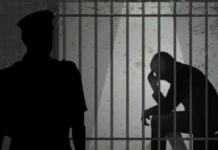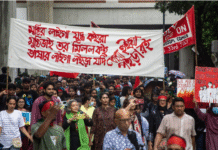
It’s a threadbare statement falling short of outlining the ToR, structure and modus operandi of the proposed centre. We are told, a committee in the information ministry, has been working at it for months. It has collected data from certain countries as to how they have kept tabs on the media. One hopes the list had included some liberal countries with a reputation for free, critical and constructive media in a changing media landscape.
You cannot, however, but sit up and take note of a jolting choice of a country to set the process afoot. Last June, a team led by the information minister had visited Sri Lanka to ‘gather experience’ from that country, about monitoring media and setting up a ‘data bank’. What has Sri Lanka to offer except its tarred legacy of controlling the media under a strict leash? Even editors were killed and some lived under constant threat to life, particularly during the Tamil insurrection, put down by an iron-fisted Rajapaksa and its immediate aftermath.
The idea of ‘watch-dogging the media’ can be termed as a knee-jerk reaction although months have been devoted to the agenda. The points at issue are: Print and electronic media are institutions while the bloggers are individuals operating in the free cyber space. On the pretext of curbing blogs perceived to be irresponsible, the monitoring provision is being extended over to the institutional and formalised media. This smacks of shrinking media space at best in an era of expanding communication and at worst, discouraging dissent where it may be a critique for the better. All this in spite of the fact that laws are in existence, some of them stringent and draconian against free media, long overdue for reform. In addition, there are oversight bodies like the Press Council to make media accountable to the law of the land.
But drawing a line between collective media and individualised media does not mean that curbs on social media do not impact negatively on media freedom as a whole. It cannot be lost on anybody that just as the new media has the potential of dividing society it has also the power to keep it connected, informed, progressive, tolerant, dynamic and mutually serving.
In an overarching sense, the matter by its very nature requires consultation with stakeholders, media representatives and experts before a set of best practice methods can be evolved in employing the media as a partner of democracy and protector of public weal.
Now to the virtues of self-regulation within the media vis-à-vis imposed regulation by the state. We go back to July 2011 when, following a series of revelations about ‘phone hacking’ and other illegal practices attributed to Britain’s largest circulation newspaper The News of the World, all political parties agreed to establish an inquiry into the “culture practices and ethics of the press”. The task was carried out by a senior judge Sir Brian Leveson who published a report in 2012.
The Leveson report proposed a system envisaged to ensure that a self-regulator (set up by the press) is independent and effective, and where it contains “double lock” safeguards against government or political interference.
The Press Complaints Commission exists to implement the benefits of self-regulation which are: Quick and free service, accessible to all, protecting the vulnerable, and maintaining a free, responsible press.
After long and protracted debate, the Britons have settled for self-regulation and that too, a non-statutory one.
Thus “the press is given significant and special rights in this country … With these rights, however, come responsibilities to the public interest: to respect the truth, to obey the law and to uphold the rights and liberties of individuals. In short, to honour the very principles proclaimed and articulated by the industry itself (and to a large degree reflected in the Editors’ Code of Practice)”. – Sir Brian Leveson
Source: The Daily Star









